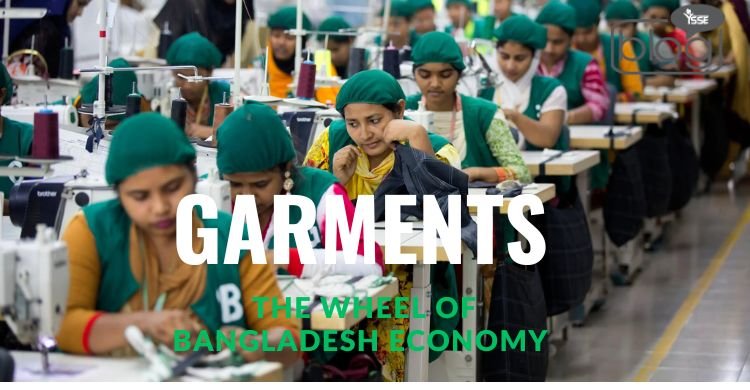“The only place where success comes before work is in the dictionary.” – Vidal Sassoon
Vidal Sassoon’s statement holds particular significance in the context of Bangladesh, where hardworking individuals have propelled the country to global recognition, notably through its thriving garment sector. Over time, this industry has proven to be the powerhouse of revenue generation in Bangladesh, a testament to the relentless efforts of its people.
Bangladesh’s garment industry, which employs over 4 million people, with a majority being women, stands as the nation’s primary driver of income and employment. It leads 80% of the country’s total export profits and contributes a significant portion of GDP. Companies like Walmart, H&M, Gap, Zara, PVH Corp, Nike, and many more are majorly introducing imported products from Bangladesh to the world.
The fashion sector is important for many reasons aside from its financial value. It is important in growing the job market, promoting gender equality, and supporting women in achieving financial independence. This industry also made huge contributions to the progress of women’s rights and the efforts to get away from adversity.
Bangladesh has turned into a major financial hub due to the remarkable success of the textile & garments sector. This industry has significantly improved the quality of life for individuals, families, and communities across the country. The result we can see looking further into the past and the impact of this vital sector.
The garment industry has been an important contributor to Bangladesh’s overall economic development to expand the country’s infrastructure, logistics and communication networks.
It has attracted foreign investment and facilitated a business-friendly environment. As a result of the industry’s growth, many people in our country, especially those living in rural areas, have seen an improvement in their quality of life and a reduction in poverty .
The RMG industry was accountable for 9.25% of the total GDP in FY22. The total revenue that Bangladesh made from the sale of RMG abroad came to USD 42613.15 million. This figure represents a growth of 35.47% in comparison to the previous financial year .
Throughout its history, the textile sector in Bangladesh encountered many challenges. Mostly in terms of worker safety, labor rights, and environmentally friendly methods. Though this sector of the economy has played a significant role in national economic growth, it’s also been criticized for the poor working conditions it treats and the low income it pays its employees.
However, the Bangladeshi government has taken many initiatives to support and enhance our clothing industry. It passed the Bangladesh Accord on Fire and Building Safety to strengthen worker safety and labor rights. The Alliance for Bangladesh Worker Safety also improves garment factory conditions. International alliances like the Ethical Trading Initiative and Better Cotton Initiative promote industry sustainability.
Like any journey to success, challenges have emerged. The garment industry faced major issues including worker safety, labor rights, and environmentally friendly activities. The health and safety of employees remains a priority concern . Tragedy cases such as the Rana Plaza collapse in 2013, which killed over 1,100 people, highlighted the importance of strict safety and better working conditions.
The aftermath of such incidents prompted worldwide awareness and action. These fatalities underscored the need for strong labor regulations and worker safety protocols. While the garment industry’s rise is great, it must address these difficulties to maintain worker well-being and sector sustainability.
Vidal Sassoon’s quote rings true in the extraordinary journey of the garment industry in Bangladesh. Success needs constant labor, dedication, and a commitment to economic and social well being.
To read more blogs, click here.
Writer
Md Hasibul Kadher Badhon
Intern, Content Writing Department
YSSE

